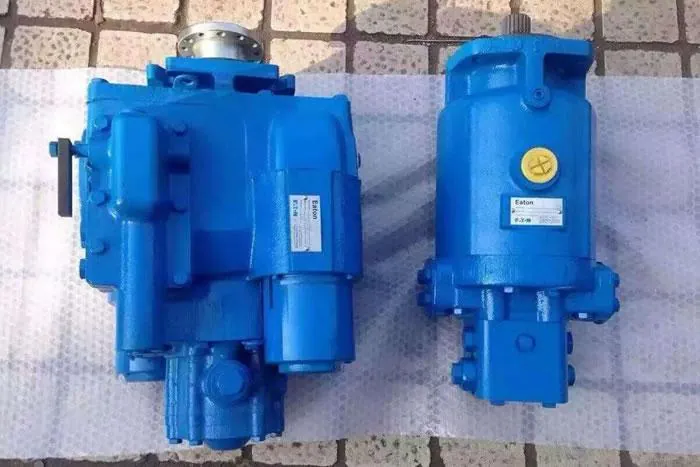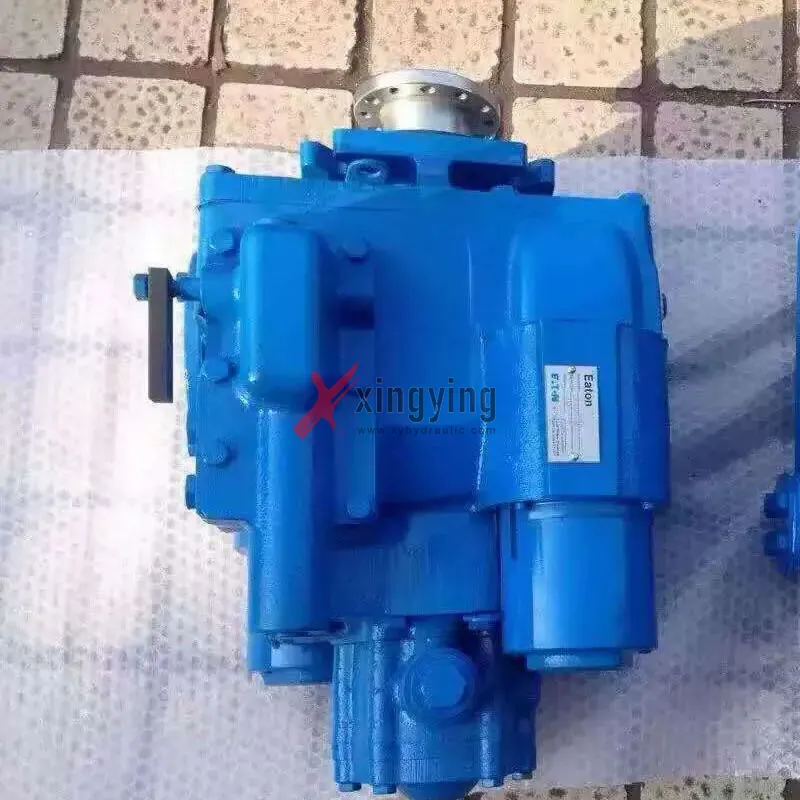Eaton hydraulic pumps working principle and performance parameters

Eaton offers a wide range of hydraulic pumps with pressures ranging from 1,000 to 8,000 psi designed for commercial,
aerospace and military ground system applications. Models are available in inline, crankshaft, fixed displacement, and variable displacement.
In addition to high reliability, fast response and smooth operation, Eaton's pumps offer low operating costs. It is the power element of a hydraulic system,
driven by an engine or motor, which sucks oil from a hydraulic tank, forms a pressurized oil discharge, and sends it to an actuating element.
Hydraulic pumps are categorized by structure into gear pumps, Piston Pumps, vane pumps and screw pumps.
Eaton hydraulic pump principle of operation
It is a hydraulic element that provides a pressurized liquid for hydraulic transmission, a pump. Its function is to convert the mechanical energy of the power machinery (such as electric motor, internal combustion engine, etc.) into the pressure energy of the liquid. The cam is rotated by the electric motor. When the cam pushes the plunger upward, the plunger and cylinder form a sealing volume that decreases, and the oil is squeezed out of the sealing volume and discharged through a check valve to where it is needed. When the cam turns to the downward part of the curve, the spring forces the plunger downward to form a certain vacuum, and the oil in the tank enters the sealing volume under atmospheric pressure. The cam causes the plunger to continually lift and lower, the sealing volume periodically decreases and increases, and the pump continually sucks and discharges oil.
Eaton hydraulic pump performance parameters
Hydraulic pump is the power component of the hydraulic system, its role is to provide pressure oil to the hydraulic system. From the point of view of energy conversion, it is the mechanical energy output from the prime mover (e.g., engine) into the pressure energy of the liquid for easy transportation. Hydraulic motor belongs to the executive element, it can be input liquid pressure energy into the output shaft rotation of mechanical energy to drag the load to do work. Hydraulic pumps and hydraulic motors can be divided into gear-type, vane-type and piston type according to the form of structure.
1. Hydraulic pump pressure
Hydraulic pump for the working environment pressure refers to the pump (or motor) in the actual management of the work output (or input) the pressure of the fluid, by the external load capacity decision.
Rated pressure refers to the test standards in accordance with the normal operating conditions can work continuously under the greater pressure. Its size is limited by the life, if working under the rated pressure, the life of the pump (or motor) will be shorter than the design life. When the working pressure is greater than the rated pressure indicates overload.
2.Speed
Work for the rotational speed is the pump (or motor) in the work of the actual need to turn a speed.
The rated speed is the higher speed that can continue normal operation for a longer period of time under the rated pressure. If the working speed of the pump exceeds the rated speed, it will cause insufficient oil suction, resulting in vibration and noise, and the parts will be damaged by vapor corrosion, reducing the service life.
Low steady speed is the low speed allowed for normal operation of the motor. At this speed, the motor will not creep.
3. Displacement, flow
Displacement refers to the pump (or motor) every turn of the week, by the seal cavity geometry to change the size of the discharge (or input) the volume of liquid, a common unit is ml / r (ml / turn). Displacement technoLogy can be the same time through the market adjustment enterprise development changes into the economic variable pump (or variable motor), displacement can not be no change into a quantitative pump (or quantitative motor).
The actual flow rate is the pump (or motor) in the outlet (or inlet) flow work. The actual flow rate is less than the theoretical flow rate due to the internal leakage of the pump. Due to internal leakage of the motor itself, in order to compensate for the leakage, the actual input flow must be greater than the theoretical flow.
4. Efficiency
Volumetric efficiency is the ratio of the actual flow rate of the hydraulic pump to the theoretical flow rate. For hydraulic motors, is the ratio of theoretical flow and actual flow.
Mechanical efficiency, in the case of hydraulic pumps, is the ratio of its theoretical torque to the actual input torque. The actual output torque of the hydraulic motor is the theoretical torque after overcoming friction, so its mechanical efficiency is the actual output torque to the theoretical torque ratio.
Total efficiency is the pump (or motor) output power and input power ratio. Total efficiency is equal to the product of volumetric efficiency and mechanical efficiency.
Manufacturer's recommendation:
Why Choose XingYing Hydraulic as Your Supplier?
1.Direct from Manufacturer: Benefit from competitive pricing on top-quality hydraulic products, sourced directly from our factory in China.
2.Custom Solutions: Our expertise allows us to tailor hydraulic components to your precise requirements, ensuring optimal performance.
3.Reliable Supply: Count on us as your trusted supplier for consistent quality and timely delivery, backed by our reputation in the industry.
